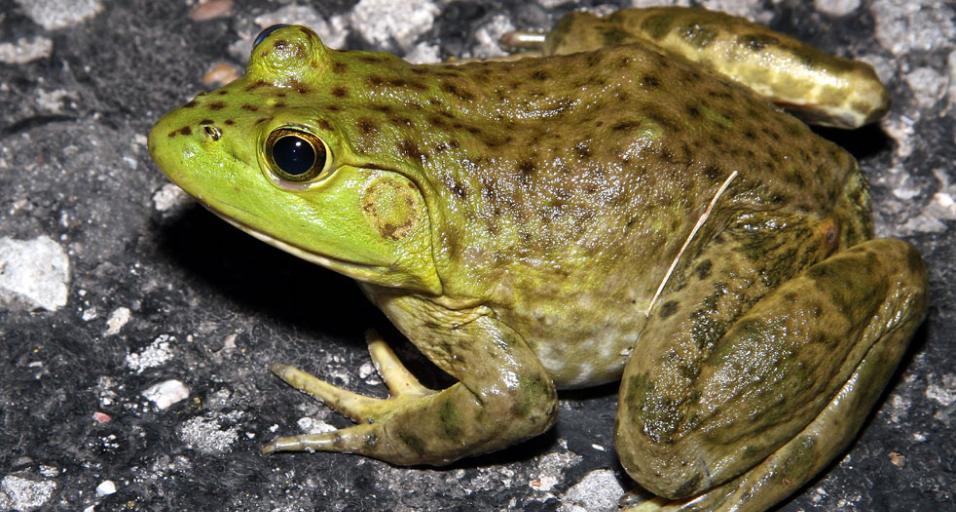Last summer, an American bullfrog was confirmed at Kleenburn Ponds north of Sheridan. Though that individual was reported to Game and Fish biologists who quickly dispatched it, its documented presence in our area is cause for concern.
Bullfrogs are native to the eastern United States. When they are intentionally or accidentally introduced into new areas, they can become invasive and have lasting impacts on native amphibians and local ecosystems.
“It is unclear if bullfrogs were ever native to Wyoming,” said Game and Fish herpetological coordinator Wendy Estes-Zumpf. “Because they have been introduced to so many parts of the U.S. and other parts of the world, it is hard to know. But if they are native to any part of Wyoming, it is just a small area on the Nebraska border along the North Platte River drainage. But they should not be anywhere else in Wyoming.”
Bullfrogs are large, aggressive predators. In their native range, other species are adapted to their presence and there are natural predators to keep them in check. However, Wyoming lacks the suite of predators accustomed to dining on bullfrogs and they can quickly overrun an area. This is already happening in waters along the Front Range of Colorado where invasive bullfrogs have decimated populations of native amphibians in recent years, particularly the Northern Leopard Frog.
“They are extremely successful and prolific amphibians,” said herpetologist Andrew Gygli, who is conducting amphibian surveys in northeast Wyoming this summer. “They can lay up to 10,000 eggs. Once established in an area, they are very difficult to control.”
He noted that bullfrogs not only out-compete native amphibians for forage and consume them as food items, but bullfrogs can also carry and spread disease. The fungal disease chytridiomycosis, or chytrid, is caused by the fungus Batrachochytrium dendrobatidis. The fungus damages the semi-permeable skin of amphibians and has caused a significant decline in amphibian populations worldwide. However, the bullfrog appears to be more resistant to the fungus than other amphibians, allowing them to spread the disease while suffering less negative effects.
In addition to surveying native amphibian populations in northeast Wyoming this summer, Gygli will also search for and respond to reports of bullfrogs in any of our waters.
With hundreds of private ponds, several large reservoirs and many miles of streams in our corner of the state, Game and Fish is asking the public to look and listen for bullfrogs while spending time outdoors this summer. Any possible sightings or calls of a bullfrog should be reported to the Sheridan Region Game and Fish Office so Gygli or other biologists can respond and investigate.
Bullfrogs can be identified by their large size, green or gray-brown color and distinctive circular eardrums, or tympanum, behind each eye. But the easiest way to document the presence of a bullfrog is to listen for it. Bullfrogs have a deep, distinct call and begin mating and calling later in the summer than our native amphibians such as boreal, leopard and wood frogs. They will be particularly vocal in July and August. There are many video and audio clips available online to familiarize yourself with a bullfrog’s unique sound.
Some reports indicate that they may be present at Keyhole Reservoir, at ponds in Cheyenne and at Kelly Warm Springs near Jackson. The widely separated geographic locations suggest that bullfrogs in those areas might be intentionally released pets or classroom projects. Releasing exotic pets such as bullfrogs, goldfish, turtles or other species can have devastating impacts on local ecosystems and can be illegal in some cases.
Bullfrogs in northeast Wyoming
3076727418

